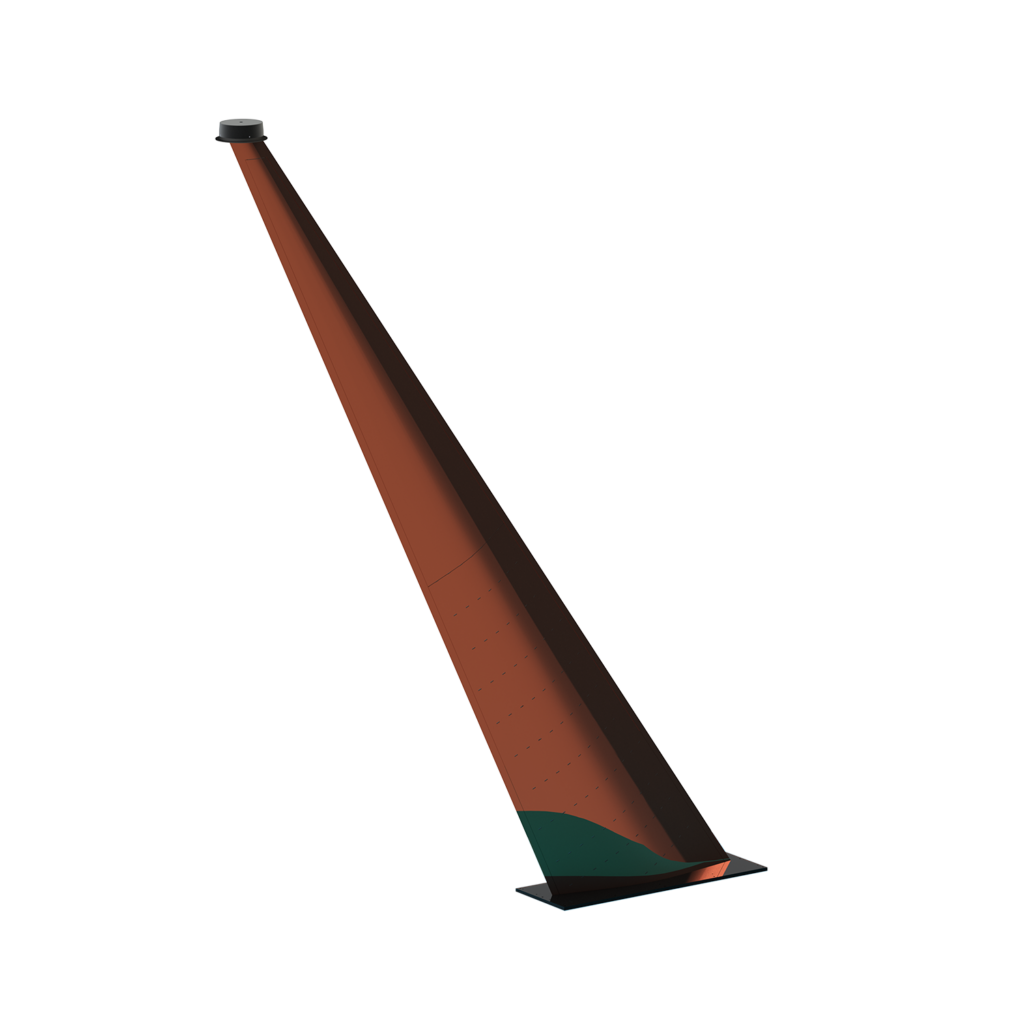
PYLONS & ROTATORS
LOW RCS PYLON
Radar Cross Section measurements require a test environment, generally referred to as the Quiet Zone (QZ), where the QZ has an extremely small backscatter at the frequencies of interest relative to the target. Having a support structure large enough and strong enough to support the object being tested, yet have a radar signature smaller than the target presents some special challenges. Pylons are typically cantilevered at a 30-degree angle and have a 10-degree taper that is continuous from the base to the tip. The ogive ratio is typically between 4:1 and 7:1, with occasional special circumstances driving the design outside those norms.
DSC builds low RCS pylons for indoor and outdoor applications from as small as 3-feet (1m) to as large as 50’ (15m). Capacities over 10,000 pounds are available.
Atop the low RCS pylon typically sits a 2-axis positioner, generally referred to as a “tophat” positioner, due to its shape. For RCS measurements this is configured as an azimuth-over-elevation (AZ/EL) to provide true conic cuts in the data acquisition runs.
